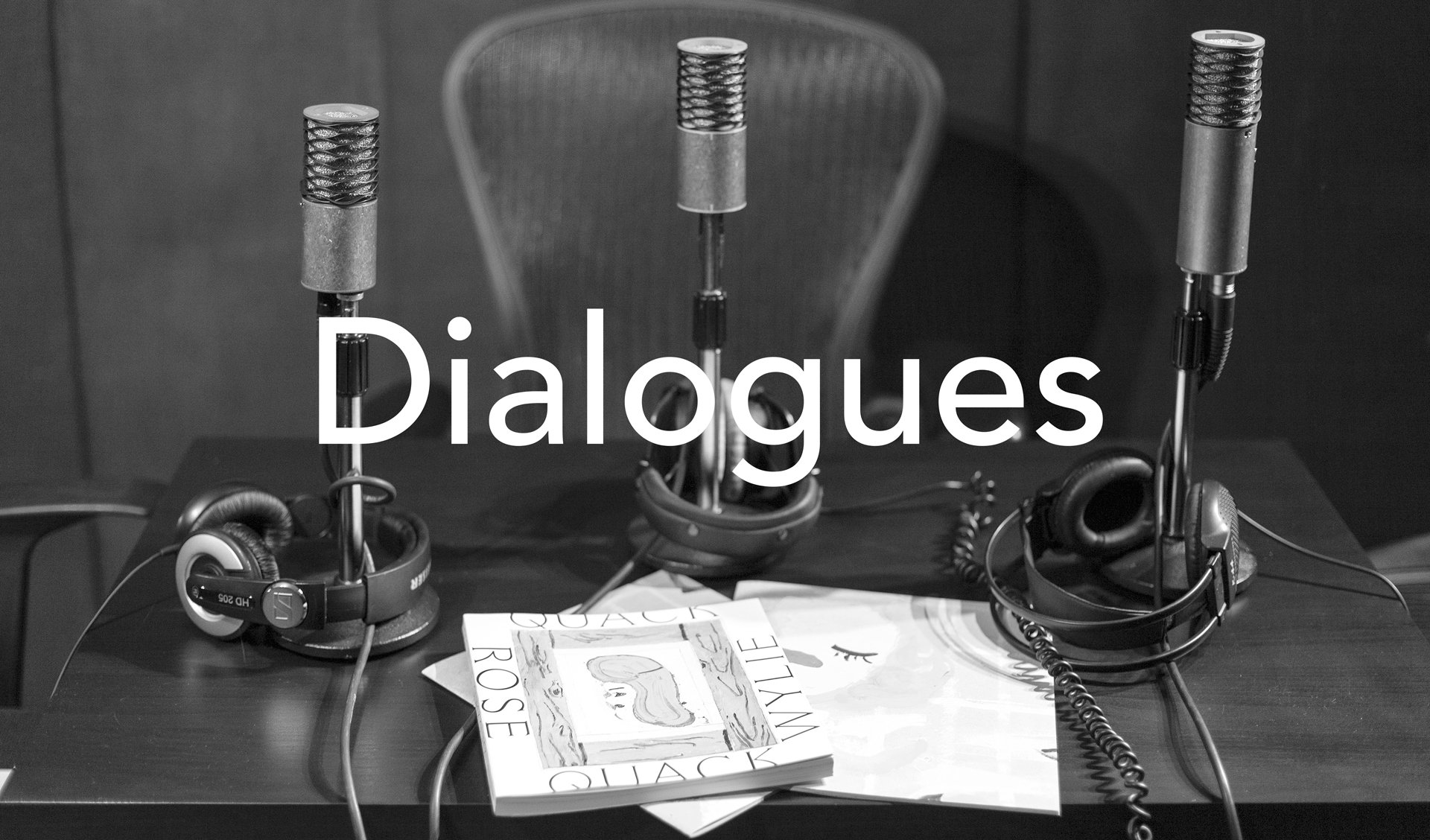
Just shy of 10 years since Apple debuted the tag line, “There’s an app for that,” we’re now firmly embedded in an era where, whatever your question or field of interest may be, there’s a podcast for that. And with the art world finally beginning to explore this medium in earnest, supergallerist David Zwirner has become the latest to try to make his mark on the field.
Titled Dialogues, the gallery’s new podcast will pair a Zwirner artist with a different cultural luminary in each episode to investigate the mysteries and discoveries of the creative process. Lucas Zwirner, editorial director of David Zwirner Books, serves as host and moderator for the conversations. The gallery announced the podcast’s debut during its bi-annual press conference on Wednesday morning, as one plank in its ambitious 25th anniversary campaign.
The inaugural episode of Dialogues, featuring Jeff Koons and Metropolitan Museum of Art curator Luke Syson, is now available as a free download on the gallery’s website. Listeners can also subscribe through a quartet of aggregators already familiar to podcast aficionados: Apple Podcasts, Google Play, Stitcher, and iHeartRadio. The series is a co-production with podcast giant Slate Studios.
Zwirner has lined up several more unexpected duos for future episodes, specifically by inviting in a selection of conversation partners from outside the insular niche of the art industry. The podcast will also feature notable names from architecture, film, and music. A sampling of upcoming interviews includes Stan Douglas in conversation with jazz pianist Jason Moran, Rose Wylie with Being Human and Looking actor Russell Tovey, and Lisa Yuskavage with feature film director Tamara Jenkins.
Clocking in at just shy of 30 minutes, the nimbly moderated first episode sees Koons and Syson flow through a number of topics befitting the baron of Banality and the intellectually mischievous co-curator (with Sheena Wagstaff) of the Met Breuer’s “Like Life.” Topics include art as an unparalleled accelerator of human evolution, the challenges of taking avant-garde work (past and present) mainstream, and the influence of Instagram and other media on interpretations of beauty.
Jeff Koons, Lucas Zwirner, and Luke Syson (left to right) recording the first episode of David Zwirner’s podcast, Dialogues. Image courtesy of David Zwirner.
More than a few instances of what podcast pros call “good tape” emerge, too, as when Koons declares that a viewer loving “the little tchotchke that was on the side of their grandmother’s table” is “as meaningful as respecting the Pietà.”
Although podcasts have existed for longer than many casual fans realize—tech and media analysts often date the form’s origin to 2003, when terrestrial radio veteran Chris Lydon and collaborators began posting a series of “audio blogs” on an RSS feed called Open Source—the medium is still at somewhat of a formative stage, even as interest pours into the space. A just-released study from the Interactive Advertising Bureau estimated that American podcast ad revenues rose 86 percent year-on-year to reach $314 million in 2017.
Zwirner is not the first gallery to take the podcast plunge. As a part of its transmedia campaign Collect Wisely, Sean Kelly premiered a series of podcast interviews about the value of passion over profit on the eve of Frieze New York last month. Postmasters debuted its bi-weekly Postcast as a reward for subscribers paying three dollars per month or more to its ongoing crowdfunding campaign. And last September, Lisson Gallery launched On Air, a somewhat free-form (and to date, infrequently issued) podcast series driven by contributions from its artists and forays into its archival material, as a part of Lisson Presents…, its cross-platform campaign to celebrate the gallery’s 50th anniversary.
It remains to be seen which of these gallery-fronted podcasts will become a part of the art media landscape for the long term. But the growing scale and diversity of entries suggests that galleries are recognizing an opportunity, if not a need, to tell their stories through more advanced—and widely accessible—channels than ever before.
Lucas Zwirner. Photo courtesy artnet News.
A statement from David Zwirner about Dialogues confirms as much: “While this year marks an important milestone for the gallery, we continue to look and move forward, whether that means opening a new gallery or exploring new mediums. This is one of the many digital initiatives we are embarking on, to both engage with new audiences and further our artists’ voices.”